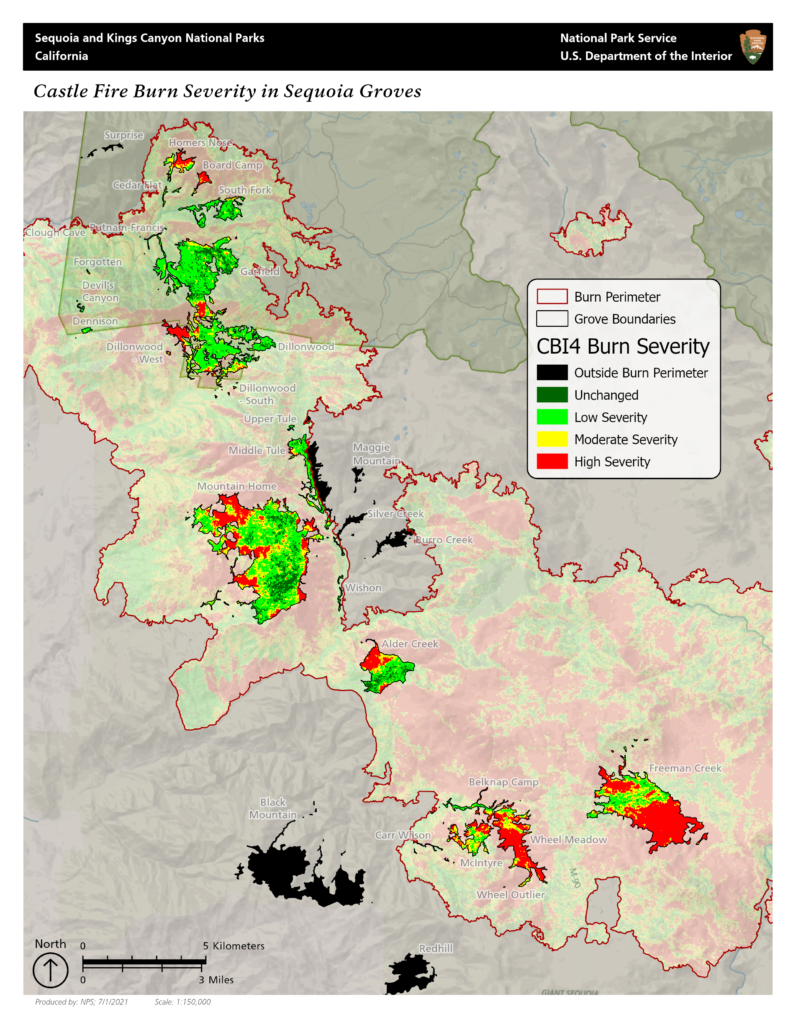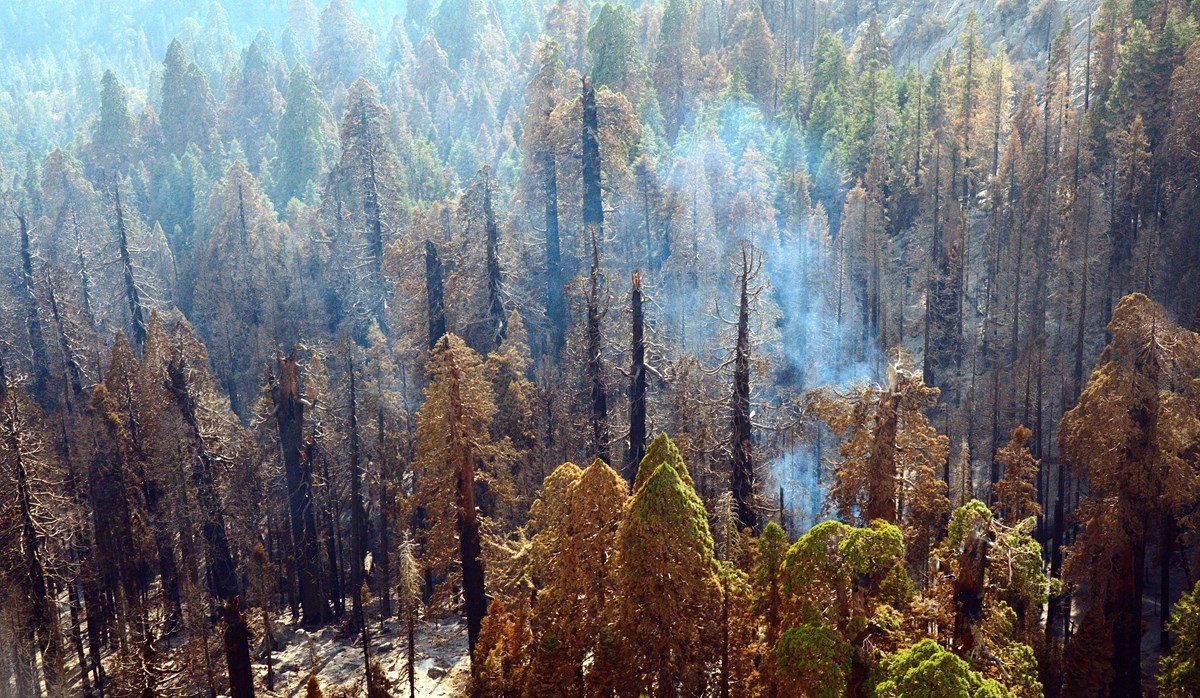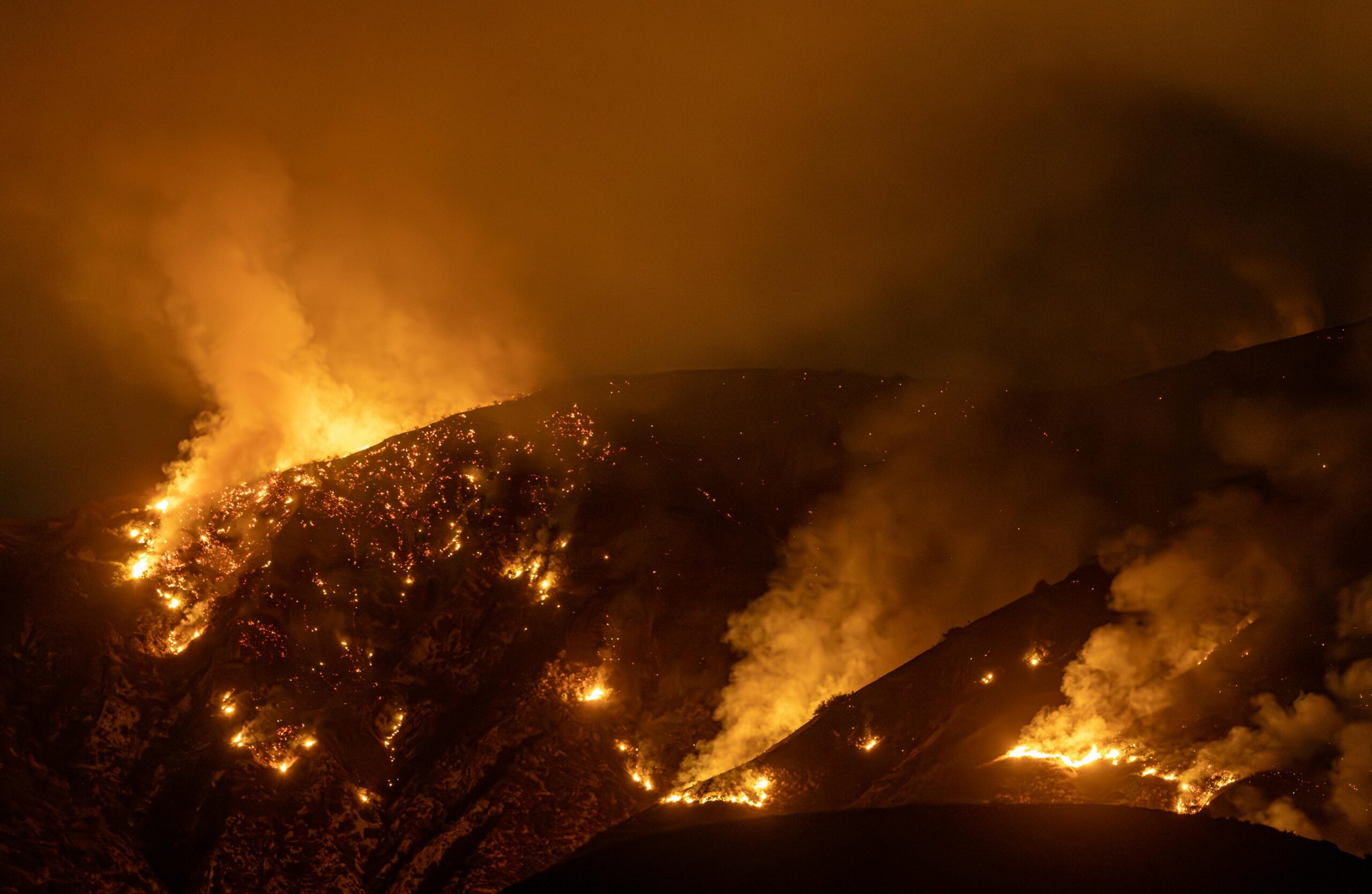In recent years, multiple fires have devastated Northern California’s famed giant sequoias. Despite strong efforts to protect the giant sequoia trees, the Castle Fire in 2020, along with the KNP Complex and the Windy Fire in 2021 all impacted and killed many of the trees throughout Sequoia National Park and Sequoia National Forest.
Giant sequoias are well suited to protect themselves against wildfires. They have very thick bark that protects the trunks and have extremely high canopies that are often out of the reach of flames. Wildfires can be advantageous when it comes to the reproduction of sequoias. Fire aids in the dispersal of seeds from sequoias’ cones. The flames remove undergrowth near the giant sequoias to allow for the seedlings to receive sunlight and grow roots.

Castle Fire Burn Severity in the Sequoia Groves
The Recent Impact on Sequoias
Until 2015, there was no recorded history of giant sequoias being destroyed by wildfire. While the 2015 Rough Fire, the 2017 Pier Fire, and the 2017 Railroad Fire all killed some of the giant sequoias, the 2020 Castle Fire killed an unprecedented number of large sequoias. Preliminary reports estimate that 10 to 14% of all large sequoias in the Sierra Nevada region were killed by the 2020 Castle Fire. Additionally, preliminary data for the Windy Fire in Giant Sequoia National Monument suggests at least 1,142 sequoias were killed. Destructive wildfires burned in 27 sequoia groves this year. The damage data for the Castle Fire, the Windy Fire, and the KNP Complex continues to be collected and finalized.

General Sherman Wrapped in Fire-Resistant Foil
Protection Measures for the Trees
A photo of the famed sequoia, General Sherman, circulated around the internet as the KNP Complex burned this year. Fire-resistant foil covered General Sherman’s trunk. This method of wrapping some of the largest sequoias in fire-resistant foil proved successful in the survival of these trees. Crews also protected the sequoias by constructing fire lines surrounding the trees to prevent fire from burning near them. When fire burned near the trees, crews extinguished hot spots and used gel retardant on the canopies to prevent the fire from spreading to the sequoias. In some cases, sprinkler systems were set up and fuels were removed near the trees to prevent further fire damage. Unfortunately, these large, fast-moving wildfires still managed to largely impact the sequoia groves, despite measures taken to protect the trees.
Restoration in the Sequoia Groves
With the help of recent burn scars and prescribed burns, the opportunities for these damaging high-severity fires can be minimized. Reducing fuels in the area plays a large role in decreasing fire intensity. Additionally, different groups are restoring this damaged ecosystem by planting young sequoia trees that will hopefully live for thousands of years like those that were killed. Forest management agencies are increasing their cooperative efforts to protect giant sequoias against future wildfire threats.




